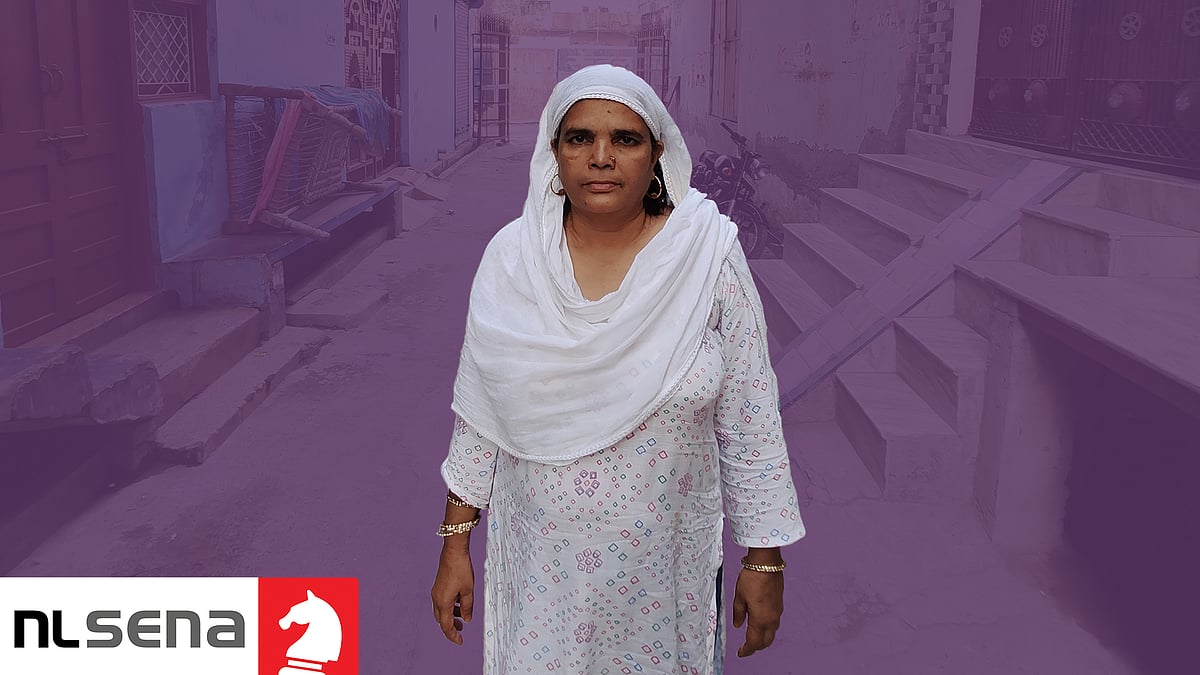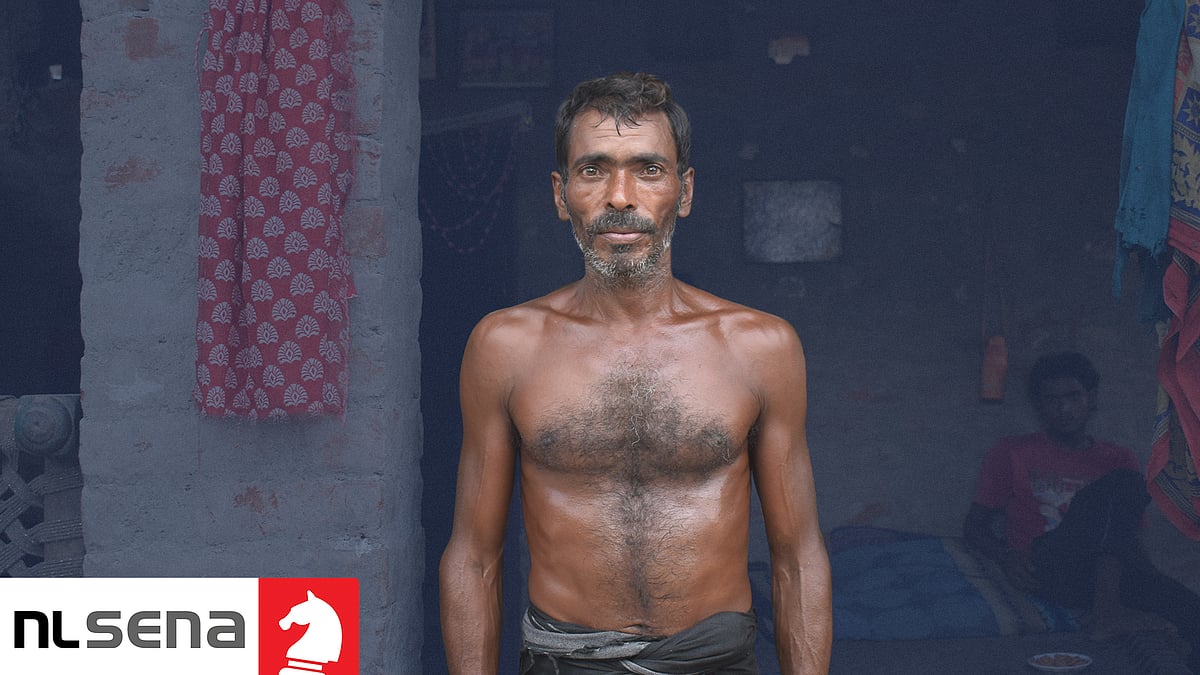Who are the torturers in Delhi carnage anthem video? Muslim boy names Jyoti Nagar SHO
The Delhi police claim they can’t identify any of the uniformed men who tortured five Muslim men on a road in northeast Delhi during last year’s communal carnage.
“We were singing out of fear,” Mohammed Waseem, 16, recalled. “They thought we were rioters and made us sing the anthem, because we are Muslim.”
Just over a year ago, a video featuring Waseem went viral on social media. It was February 24, a day after communal violence had broken out in northeast Delhi. The video showed five Muslim men, including Waseem, lying injured on a road in Kardam Puri, struggling to sing the national anthem. A group of lathi-wielding policemen, their faces hidden from view, surround and assault them, even as the men sob.
One of the men, Faizan, died from his injuries two days later.
Afterwards, two FIRs were registered at Bhajanpura police station. One for Faizan’s “murder by unknown persons”. The second against the four men who survived the torture, for rioting and attempt to murder.
In neither FIR does the role of the police find a mention. Although eight policemen are confirmed to have been present while the five men were tortured, the Delhi police told the high court in February they could not identify any of the cops in the video.
Waseem’s complaint
For Waseem, it’s been a year of trying to make himself heard.
On July 10, 2020, he filed a complaint naming Shailendra Tomar, station house officer, Jyoti Nagar, and two unnamed policemen from the same police station. He sent copies of his complaint to the Delhi police chief, the National Human Rights Commission, and union home minister Amit Shah.
He got no response, Article 14 reported, so Waseem’s father moved a district court last November seeking registration of an FIR. Finally, on March 22 this year, the Shahdara district court directed the police to give a copy of an action taken report in Waseem’s case to his lawyer. The next hearing is scheduled for May 10.
Newslaundry accessed a copy of Waseem’s complaint. His memories from February 24, 2020, begin with him rushing towards the Kardam Puri pulia, or bridge, where the neighbourhood women had gathered to protest against the Citizenship Amendment Act. Waseem was looking for his mother, who was participating in the protest, when he spotted BJP leader Kapil Mishra with his supporters near a mohalla clinic.
“Mishra had a revolver in his hand,” Waseem alleges in his complaint. “The police gave him a mic and he announced, ‘These katuas haven’t learned any lesson from our beating yesterday, today we will have to give them proper treatment. Brothers, police are with us.’” Katua is a pejorative for circumcised Muslim men.
Then, according to Waseem, Mishra shouted his now infamous slogan: “Desh ke gaddaron ko, goli maaro saalon ko.” Shoot dead the country’s traitors.
Mishra’s speech is widely blamed for inciting the ensuing carnage in which 53 people were killed and thousands were forced to leave their homes for good. Around 122 homes, two temples, and 14 mosques and dargahs were burnt down or damaged.



Sensing trouble, Waseem took a road behind the mohalla clinic home. He fell, and that’s when the police spotted him.
“Some policemen came and began hitting me with lathis,” Waseem told Newslaundry. “They were soon joined by other cops who started hitting me with rifle butts.”
He lost consciousness, and when he came to he realised he was bleeding from the head.
As Waseem lay bleeding, he alleges in his complaint, Shailendra Tomar, the SHO, arrived. Waseem recognised Tomar, who then said, “Take this rascal and put him where other katuas are lying.”
He was dragged away to where the other four Muslims lay on the road. There, he alleges, Tomar “told his men these people need to be set on fire, and then thrown in the drain like others”.
Another policeman, whom Waseem recognised from doing the rounds in Kardam Puri, said, “Before setting the katuas on fire, let me make a video on how to get freedom. I need to send it to the minister.”
Tomar directed one of his men to fetch petrol, Waseem’s complaint says. But then a policeman said he could see someone shooting a video from a rooftop.
“SHO saab then said if we set them on fire now, all of us (referring to policemen) will be dead,” the complaint adds. “Put all of them in my vehicle. We will have to take them to the hospital.” A police jeep took Waseem and the four others to Guru Teg Bahadur Hospital in Shahdara.
Waseem’s mother, Shamim, told Newslaundry his condition was such “that we had little hope of him making it. He was covered in blood from head to toe”.
Her son wasn’t given medication, Shamin added. “They just put cotton on his wound.”
Newslaundry accessed Waseem’s paperwork from the hospital, signed by a doctor, which notes, “Physical assault by mob at 5 pm on 24.02.2020 at Kardam Puri, Delhi, as stated by the patient himself.” Another document mentions the need for sutures, or stitches. Next to it, however, Waseem penned a note in Hindi, “I don’t want stitches to be done.”
Waseem’s parents alleged that he was forced to write that by the police, even though he had a head injury.
Waseem’s complaint also says this about his experience at the hospital: “I narrated the entire incident to the doctor. He scolded me badly and said, ‘Mulle, your mind is not working.’” Mulla is a pejorative for a Muslim man.
Waseem was discharged quickly even though he could barely move his limbs. His family then admitted him at St Stephen’s Hospital, Tis Hazari, where they paid Rs 40,000 for his treatment.
Newslaundry visited the Jyoti Nagar police station to speak with Tomar, only to be told to contact him on his phone. Despite repeated attempts, he did not take our calls. This report will be updated if he responds.
Newslaundry also sent questionnaires to police commissioner Shrivastava and the police headquarters’ public relations officer. We will update this report if we receive a response.
Tutored statements to the media
In his complaint, Waseem mentions an unnamed policeman “who is dark, wears thin-rimmed glasses, and roams in the neighbourhood”. He was present when Waseem and his father, Ataullah, went to Bhajanpura police station, where Tomar had summoned them to record his statement, on March 4. Waseem claims the policeman told a female officer to note that their statement was “full of lies” and compelled Waseem and Ataullah to sign it.
He also alleges that Tomar compelled him to tell a couple of journalists he had brought to the police station that the SHO “saved his life” and that he had “no complaints against the police”. He was also told to say: “We are thankful to the police for not just saving our lives but also helping us in getting the best medical treatment.”
Waseem says in his complaint that Tomar instructed him to practise these lines in front of a mirror so as to sound authentic. On March 12, Waseem did as he was told to a cameraperson from India TV at Jyoti Nagar police station. A few days later, he says, he repeated his performance outside the police station for Zee News.
Newslaundry could not find Waseem’s statement on the YouTube channel of either India TV or Zee News, though Ataullah corroborated his son’s claims saying he identified the camerapersons from their IDs and mics.
Newslaundry sent questions about Waseem’s allegations to Zee News editor Sudhir Chaudhary and India TV editor Rajat Sharma but did not receive a response. This report will be updated if we do.
‘How difficult is it to identify the officers?’
Faizan’s mother, Kismatun, has gone to the Delhi High Court demanding an SIT investigation.
Kismatun, 60, lives in Kardam Puri, not far from where her son was tortured.
She also mentioned Tomar. “I was called by the SHO soon after the death of my son,” she told Newslaundry. “He asked me to change my statement.”
She didn’t know what Tomar meant by “changing” her statement but she didn’t comply in any case.
Kismatun had given her statement to the police on March 19, 2020, alleging that Faizan was detained at Jyoti Nagar police station from February 24 to 25 and denied timely treatment by the police which resulted in his death. Faizan had narrated his ordeal to her before he lost consciousness, she said, adding that he had been beaten up with lathis by eight to 10 policemen.
Faizan had also told his mother the police targeted him because he was Muslim.


But why are the Delhi police taking so long to identify the perpetrators of the attack?
In March 2021, the police’s crime branch office in Daryaganj appealed to the public to help them identify the “group of people in police uniform” who are seen assaulting the five Muslim men in the video.
The crime branch’s investigating officer Pankaj Arora refused to speak to Newslaundry and directed us to Rajesh Deo, deputy commissioner of police, crime. Deo said the matter was “subjudice and sensitive” and refused to discuss it.
“Every police officer posted in a locality is documented,” said Mehmood Pracha, Waseem’s lawyer. “How difficult is it to have a test identification parade to identify those officers?”
“There are only two possibilities,” he argued. “Either they were policemen who could be identified from the roster, which is documented. If they weren’t in that roster then they weren’t policemen but were supplied with police uniforms.”
Meanwhile, Waseem dropped out of school after his torture. His father told Newslaundry: “He can never apply for a passport and go abroad for studies.”
“I had to leave the school,” Waseem said, “I am not sure what I will do.”
 Delhi carnage: How Mohammad Arif turned Hindu and lynched his uncle
Delhi carnage: How Mohammad Arif turned Hindu and lynched his uncle Delhi riots: In Shahid Alam’s murder, witnesses cry fabrication by police
Delhi riots: In Shahid Alam’s murder, witnesses cry fabrication by police
